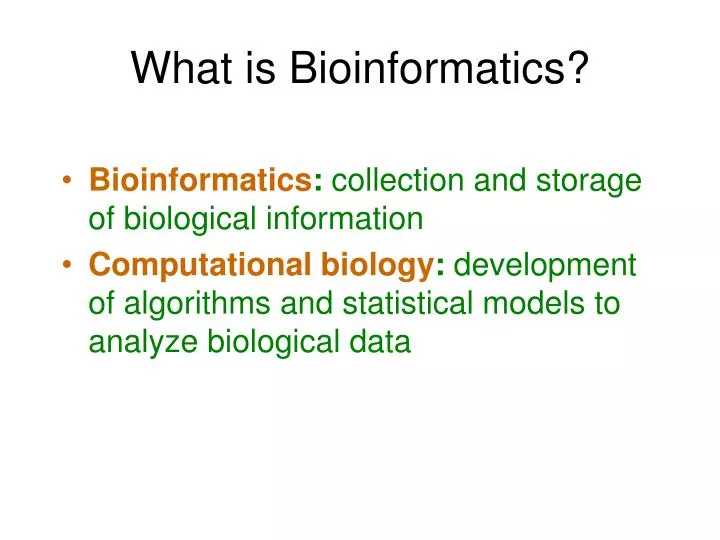The Of Bioinformatics Tutor
Get This Report on Bioinformatics Tutor
Table of ContentsBioinformatics Tutor for DummiesSome Known Details About Bioinformatics Tutor Facts About Bioinformatics Tutor UncoveredBioinformatics Tutor Things To Know Before You Get ThisNot known Facts About Bioinformatics Tutor
Of the total amount participants involved in the training, 80% were trainees from public greater education and learning establishments, while the remaining 20% originated from exclusive institutions. To get approved for a certification of engagement, students were called for to go to a minimum of 90% of the overall training hours. As an outcome of this requirement, an impressive 95% of the participants efficiently gotten their certifications, having not just met the minimum attendance standards yet additionally finished all designated tasks throughout the training.
During the height of the COVID-19 pandemic, particularly between June and August 2020, the project group was charged with arranging specialized training in bioinformatics. This training was specifically targeted at trainees from the research study group Core for Research study in Applied Computing at the Federal College of Pará (UFRA) The adaptation to remote learning platforms because of the pandemic created a chance to explore new training methodologies and electronic devices that enhanced both reach and effectiveness.
To react to the growing need in the computer and life sciences areas, an innovative program was presented in 2020 entitled Intro to Machine Learning. This course was designed to provide an accessible yet thorough summary of Expert system strategies, particularly as applied in bioinformatics. The program was performed over three months, from October to December 2020, and was supplied completely online via the Google Meet system. This virtual style enabled engagement from trainees across Brazil, much of whom could not have had the chance to participate in in-person sessions.
Fascination About Bioinformatics Tutor
A significant feature of this training course was its focus on hands-on understanding. Roughly 50% of the complete training hours were dedicated to practical tasks where students built smart versions and applications in a variety of scientific domain names, including genetics, molecular biology, and ecological information evaluation. Widely used frameworks and devices such as Spyder, Google Colab, Jupyter Notebooks, and Orange were integrated right into the coursework. These platforms made it possible for students to take part in real-time information adjustment, version training, and algorithm testing.
Sixty of them were affiliated with numerous greater education and learning institutions in the state of Pará, while the staying twenty came from organizations located in 5 other Brazilian states. By introducing Artificial Knowledge in a pertinent and functional context, the effort offered to connect the void in between concept and real-world application, offering pupils with a solid foundation for future research or work in the area.
The training initiative developed part of a wider academic outreach effort called the Bioinformatics when driving job. This job has, over the years, presented loads of pupils to the globe of bioinformatics and computational biology. The events held under this umbrella campaign have actually happened throughout numerous areas and years, as summarized in Table 1 (List of occasions, locations, years, and total numbers of students and teachers)
One of the most impressive results of the Bioinformatics when traveling effort has been its contribution to the development of decentralized research study groups. Several of these teams, at first united by their engagement in training occasions, have considering that taken place to create independent scientific study in partnership with neighborhood scholastic establishments. The training not only promoted scientific thinking within the context of bioinformatics however also sparked collective connections that extended beyond the training environment. These partnerships have actually led to enhanced local scientific efficiency and contributed meaningfully to the growth of the wider bioinformatics area in Brazil.
Bioinformatics Tutor Fundamentals Explained
The same group, excluding IH and RR, also acted as tutors for the practical training components. Financing for the job was supplied with the grant 88887.200562/ 2018-00 from CAPES.
The Federal College of Pará's Office of Research study (PROPESP/UFPA) likewise gave financial backing, specifically for the manufacturing of the last manuscript. The authors state no commercial or monetary disputes of interest that might have affected the research. Moreover, all analyses and opinions revealed in this post are solely those of the writers and do not always mirror those of their particular establishments, the author, editors, or customers associated with the publication procedure.

The 3-Minute Rule for Bioinformatics Tutor
From an instructional point of view, the training technique used in the training was deliberately interactive. Classes were carried out in a way that urged pupil engagement and conversation, surpassing rote memorization to explore just how concepts are created, applied in day-to-day read the article live, and checked in scholastic settings. The training ideology concentrated on nurturing both strong and having a hard time trainees, providing personalized support, and building self-confidence with sustained mentorship and persistence.

Each team, being composed of about 36 individuals, was supported by three mentors-- a lot of whom were postdoctoral scientists with specific knowledge. These advisors not just helped make the team jobs but likewise facilitated their execution, making certain that each research study question was both pertinent and properly difficult. The goal was to offer a biologically realistic context that individuals could check out via open-ended goals and access to curated datasets.
For additional insights into the technique and outcomes of this project-based knowing method, visitors are directed to S1 Text, that includes comprehensive descriptions of the instructional structure, assessment strategies, and job themes utilized in the training sessions.
The 4-Minute Rule for Bioinformatics Tutor
Of the total amount individuals entailed in the training, 80% were trainees from public higher education institutions, while the staying 20% came from private organizations. To certify for a certification of engagement, trainees were needed to go to at the very least 90% of the total training hours. Notably, beyond the trainees that Extra resources enrolled in the training sessions, seven skilled teachers took part in delivering the courses, while 3 specialized research professors worked with the general training procedure. Roughly 50% of the overall training hours were devoted to functional activities where trainees developed smart versions and applications in a variety of clinical domains, consisting of genes, molecular biology, and ecological data evaluation. The training not only cultivated clinical thinking within the context of bioinformatics yet additionally sparked collaborative partnerships that prolonged past the training setting.